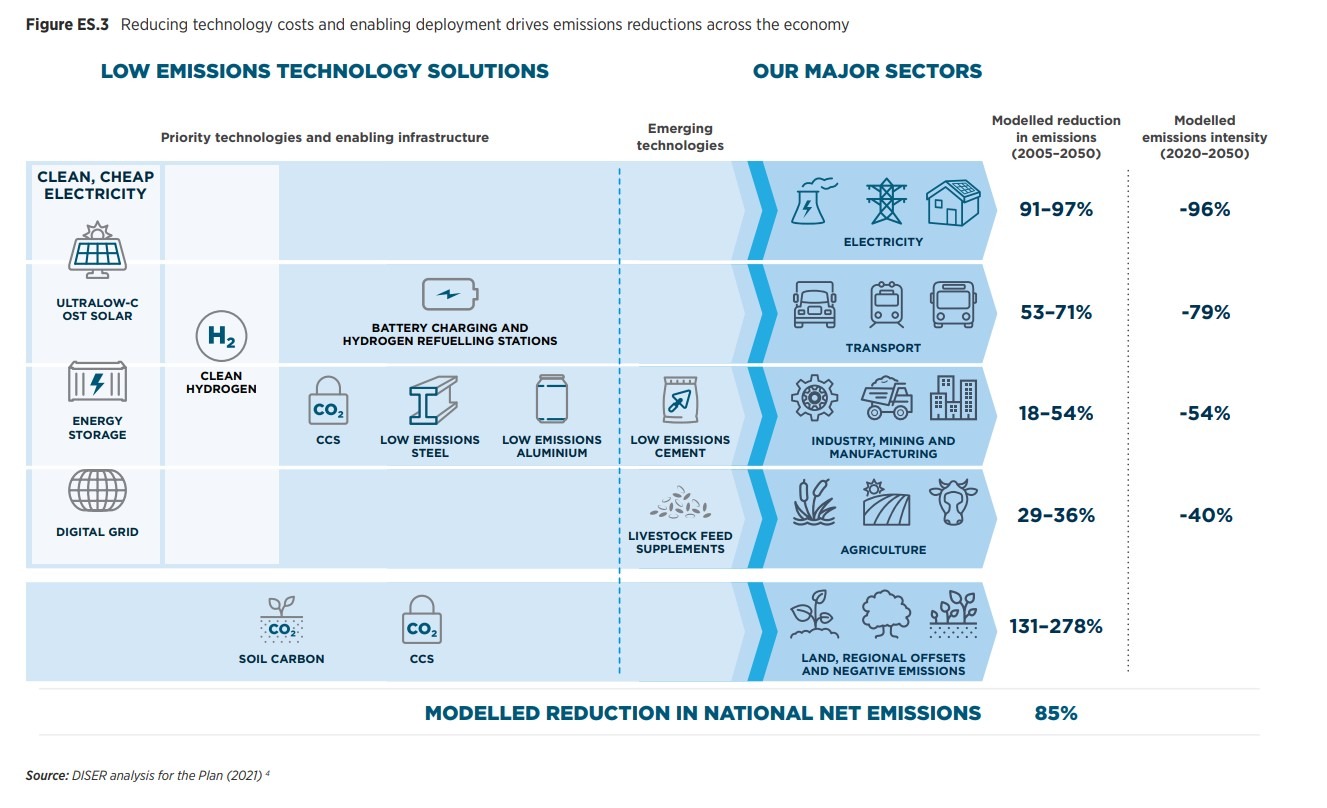The Morrison government’s net zero plan may well have been scant in detail and predicated on the emergence of un-named and unproven technology advances. But it did reveal one thing: the Coalition has finally accepted the potential for low-cost solar power to drive Australia’s green energy transition.
A week after Resources Minister Keith Pitt mocked solar for not being able to generate in the dark, federal energy and emissions reduction minister Angus Taylor announced a stretch target for “ultra-low-cost” solar production at less than $15 per megawatt-hour, or 1.5 cents per kilowatt-hour.
Those sort of prices have only been achieved in Middle East countries, where cheap debt, lower labour costs and internal pricing has given what same say is a false impression about real solar costs.
But the new target recognises what the International Energy Agency has also recently accepted, that solar is the cheapest form of electricity ever produced, and driving costs even lower is key to the green energy transition and new green industries.
Taylor’s Long-Term Emissions Reduction Plan, released on Tuesday, says low-cost solar energy would have flow-on benefits for other parts of the economy, especially the production of renewable hydrogen, which in turn can be used to decarbonise other parts of the economy, including metals processing.
“Reducing the costs of solar generation will also unlock the economic, employment and abatement potential of other priority low emissions technologies,” the plan says.
“Clean electricity at $15 per MWh would enable low-cost clean hydrogen production and increase our competitiveness in hydrogen export markets. It would also support cost-competitive production of low emissions steel and aluminium and emerging technologies like direct air capture of CO2.
“Modelling for the Plan shows that, if we can realise these cost reductions, solar could become the single largest source of Australia’s electricity generation by 2050 (over 50% of total generation),” it says.
Unlocking ultra-low-cost solar is therefore crucial for Australia’s electricity system to achieve near zero emissions.
It’s a long way from the Morrison government’s previous stance on solar power – including the unfortunate remarks from Pitt about solar panels not working at night.
The government now suggests that a solar energy cost of below $15 per MWh would help lower the cost of renewable hydrogen to below $2 per kilogram, and low emissions steel to less than $700 per tonne, and green aluminium to under $2,200 per tonne.
The emissions reduction plan expects to see growth in renewable energy sources as driving as much as a 97 per cent reduction in emissions from electricity generation by 2050, an 18 to 54 per cent reduction in emissions from industry and manufacturing, as well as a 53 to 71 per cent cut in transport emissions, which will be achieved through a switch to electric and hydrogen-fuelled vehicles.
Cheap supplies of solar power would help drive all of those emissions reductions without the need to use more costly and more emissions intensive sources of fossil fuels.
But the pace of that transition is way too slow. The Australian Energy Market Operator is working on a blueprint to reach a zero carbon grid by 2035, and network owners like Transgrid think it can be done even quicker, reaching 91 per cent renewables by 2030.
The plan has been criticised for not doing much to increase the pace of transition, and emissions cuts, in the critical decade before 2030.
“Without a stronger 2030 target, there remains a lack of clarity and positive investment signals to accelerate the decarbonisation of Australia and take advantage of the enormous economic opportunity in play,” the Clean Energy Council said.
“Today’s announcement does little more than echo the commitments and action already underway by state governments, businesses and households.”
The plan does not detail any new policies that the government will adopt to help achieve its new cost goal for solar energy.
But it did point to funding being provided through existing arrangements, including through the Australian Renewable Energy Agency, the Clean Energy Finance Corporation and the Reliable Affordable Clean Energy (‘RACE for 2030’) Cooperative Research Centre (CRC).
ARENA has already helped drive significant cost reductions in the cost of large-scale solar energy projects in Australia, subsidising the first large-scale projects constructed in Australia, which led to dramatic reductions in the cost of building subsequent projects.
Solar energy is now one of the cheapest sources of new-build electricity generation capacity in Australia and is expected to play a substantial role in Australia’s future grid. Its costs are estimated at around d $A40 to $50 per MWh, although this may have changed as a result of pricing pressures on materials and shipping.
Australian research institutions, particularly the University of New South Wales, but including others like the Australian National University, the University of Sydney and the CSIRO, have made major contributions to the development of solar technologies.
The PERC solar cell design, developed by UNSW, is expected to emerge as a de-facto industry standard for solar cell design and is already used in a majority of solar cells sold in the current market.
The government will present the Long-Term Emissions Reduction Plan as its primary climate strategy to the COP26 talks in Glasgow.









